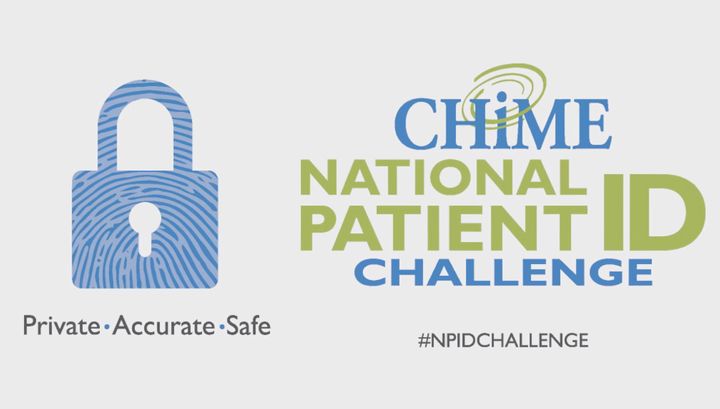
Have you ever gone to the doctor's office or the emergency room, only to find that they aren't sure who you are? Even worse, have you ever been mistaken for someone else?
The CHIME National Patient ID Challenge aims to make situations like these a thing of the past. Sponsored by the College of Healthcare Information Management Executives (CHIME), this global competition aims to ensure 100 percent accuracy when identifying patients in the U.S.
A more accurate method for quickly identifying patients will make the healthcare system safer and more efficient in a number of ways. It will reduce the number of preventable medical errors, reduce unnecessary cost, and improve quality of care all around.
The goal of the CHIME challenge is to create a national patient identification solution. What the solution ultimately looks like is up to the challenge competitors to determine: it could be a single, encrypted identifier or a combination of several identifying factors, for example.
The challenge does require that the identification solution be unique to every person and that it can be used to quickly and accurately identify and match a patient with their personal health information 100 percent of the time. The solution also needs to be secure and resilient, privacy-enhancing and voluntary, interoperable, cost-effective, and highly scalable across the country.
We're looking for a way to standardize patient information across the nation, much like standardized gauges for railroad tracks. If railroad tracks around the country aren't made to the same specifications, trains won't be able to travel freely between them.
The same is true for healthcare data. With a standardized patient identification solution, information can flow more effectively between healthcare providers thus improving interoperability.
National Patient Identifiers Will Improve Healthcare
There have often been problems getting the right patient records to the right places, especially in emergency situations when people have trouble speaking for themselves (or can't speak at all). In some of these cases, having the right information quickly on hand could save a person's life.
Hospitals and other healthcare providers have been trying to share information, but there are many challenges. Healthcare records were recorded on paper in the past, and they've been in the process of being converted to digital. But this is a fairly slow shift, and the current system is unfortunately error-prone.
In 2014, the Office of the National Coordinator for Health Information Technology found that, in the very best cases, the error rate for patient identification is around 7 percent. Most healthcare providers have internal error rates of at least 10 or 20 percent, and when information is exchanged between providers the problem gets much worse: the error rate rises to around 50 to 60 percent.
This is a big problem that leads to many other problems. Confusion in the system creates inefficiencies, like repeated or unnecessary tests. Not only do these cost time and money, they could in some cases be harmful to the patient. Medications can potentially interact with negative consequences, or can cause harm depending on the conditions that a patient may have. All the effort that goes into fixing these issues as they pop up could be much better spent in providing quality care.
These problems, and the overall confusion they cause, also mean that the privacy of patient records is at risk. In the modern world, older systems are usually the most vulnerable to hackers and data thieves.
An Organized Method of Healthcare Delivery
This challenge is not necessarily about creating a complex system with lots of functionality. It is about patient safety. The goal is to create a way to quickly and easily confirm that a patient is who they say they are and that the electronic records found actually belong to that patient. Ultimately, a national patient identification solution will help us ensure that we have the right patient and are providing the right care at the right place and right time. Every time.
In the healthcare setting, patient privacy is also paramount. That’s why we're calling for a solution that also lets patients specify their own privacy settings in detail. Patients should be able to give different providers access to different types of data, if they so choose.
We also want to enable a way to give patients access to information about the activity of their healthcare providers, such as when they check credit records.
To sum up the 6 main goals of this challenge:
- Easily and quickly identify patients
- Achieve 100% accuracy in patient identification
- Protect patient privacy
- Protect patient identity
- Achieve adoption by the vast majority of patients, providers, insurers, and other stakeholders
- Scale to handle all patients in the U.S.
Our healthcare system has made progress however, it still needs to be modernized. Do you have the bright solution it will take to start a revolution in patient data?
We want to hear from you! Click here to go to the CHIME National Patient ID Challenge page for more information and to submit your solution now!








